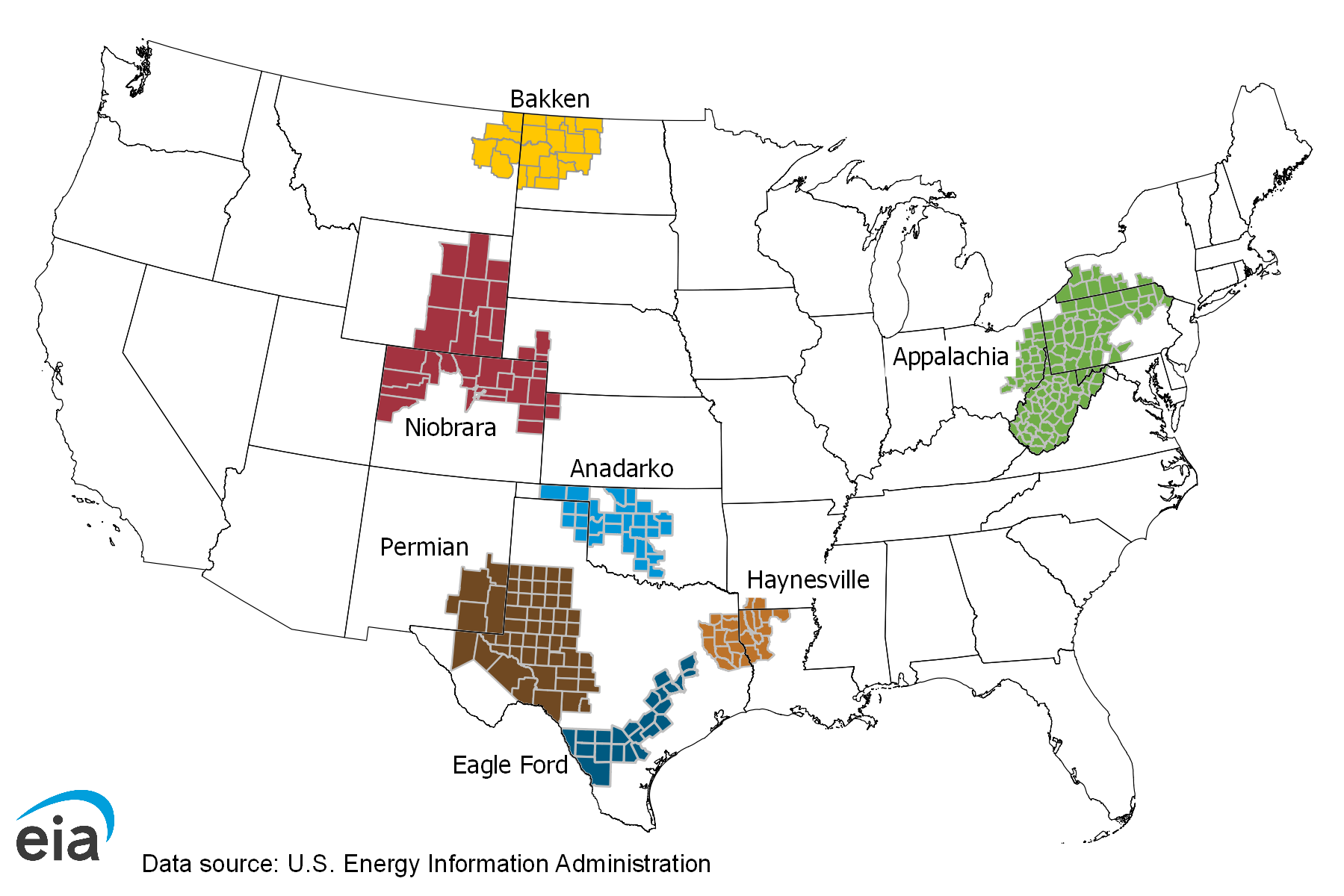Oil and gas production averages slip in Anadarko

Oil and gas production from new wells in the Anadarko Basin, of which Oklahoma is a large part dropped from January to February according to a new report from the U.S. Energy Information Administration.
The EIA report showed the average production of oil dropped from 762 barrels a day in January to 731 barrels in February of this year.
New-well gas production per rig fell from 3,941 Mcf a day in January to 3,744 Mcf per day in February.
Increased daily averages for oil and natural gas were observed in the Eagle Ford of South Texas while the production in the Permian Basin declined from January to February according to the EIA.
| Anadarko |
762 |
731 |
(31) |
3,941 |
3,744 |
(197) |
| Appalachia |
188 |
188 |
– |
30,399 |
30,551 |
152 |
| Bakken |
2,106 |
2,000 |
(106) |
2,948 |
2,800 |
(148) |
| Eagle Ford |
2,304 |
2,235 |
(69) |
8,348 |
8,181 |
(167) |
| Haynesville |
19 |
19 |
– |
11,971 |
12,073 |
102 |
| Niobrara |
1,603 |
1,570 |
(33) |
4,351 |
4,264 |
(87) |
| Permian |
1,210 |
1,195 |
(15) |
2,309 |
2,281 |
(28) |
| Rig-weighted average |
1,135 |
1,116 |
(19) |
6,327 |
6,183 |
(144) |
NOTE: The Drilling Productivity Report (DPR) rig productivity metric new-well oil/natural gas production per rig can become unstable during periods of rapid decreases or increases in the number of active rigs and well completions. The metric uses a fixed ratio of estimated total production from new wells divided by the region’s monthly rig count, lagged by two months. The metric does not represent new-well oil/natural gas production per newly completed well.
The DPR metric legacy oil/natural gas production change can become unstable during periods of rapid decreases or increases in the volume of well production curtailments or shut-ins. This effect has been observed during winter weather freeze-offs, extreme flooding events, and the 2020 global oil demand contraction. The DPR methodology involves applying smoothing techniques to most of the data series because of inherent noise in the data.






